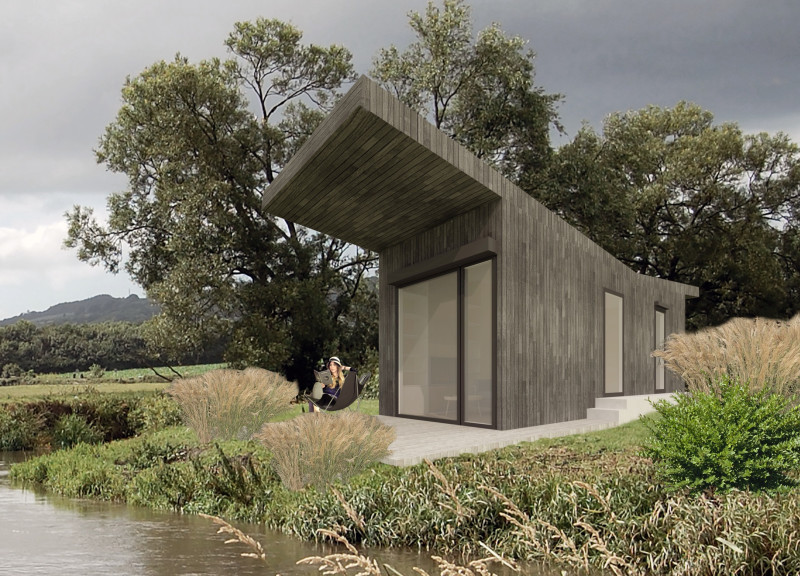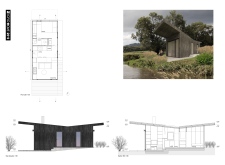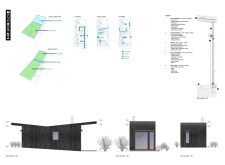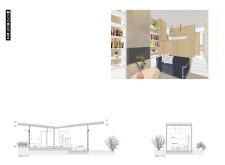5 key facts about this project
Micro Home 2019 offers a fresh take on compact living by focusing on efficiency and sustainability within a small space. Located in an urban environment, the residence addresses the needs of modern life, balancing essential daily functions with a design that connects well with its surroundings. The design aims to blend public and private spaces, allowing for easy movement and comfort throughout the home.
Spatial Organization
The layout carefully organizes functional areas for storage, a WC/shower, sleeping, cooking, and living/working. Each zone serves a specific purpose, making the most of the limited area available. This thoughtful arrangement facilitates smooth circulation, allowing occupants to move effortlessly between different sections of the home.
Natural Light and Views
Natural light is a crucial aspect of the design. The building’s elevations have been positioned to maximize sunlight, particularly with the east elevation, which captures morning light. This feature enhances the interior environment, creating a bright and inviting space that encourages a connection to the outdoor surroundings.
Sustainability Features
Sustainability is integrated into the home through the use of energy systems like solar panels and rainwater collection. These elements reflect an effort to minimize the environmental impact of the home. By using renewable resources, the design enhances functionality and meets the demand for environmentally friendly living.
Construction and Materials
Construction details reveal a thoughtful design approach with multiple layers that contribute to the overall performance. The roof includes features such as a solar panel, composting toilet, and heating system. Materials mentioned include wood panels and wood Shou Sugi Ban, which serve both structural and visual purposes. Aluminium frame windows with triple insulated glazing provide thermal efficiency and noise reduction, enhancing the home's durability.
The final design incorporates outdoor spaces that enhance the connection to nature, allowing for easy interaction between indoor and outdoor environments.




















































